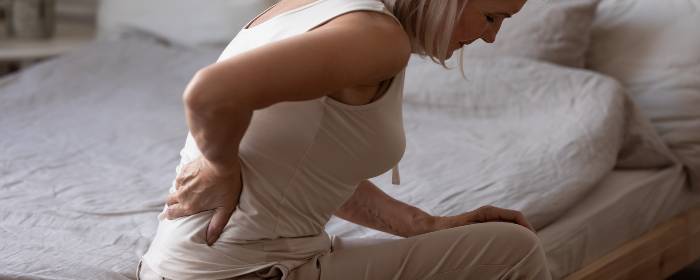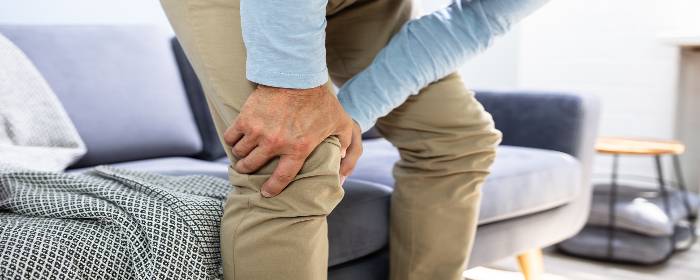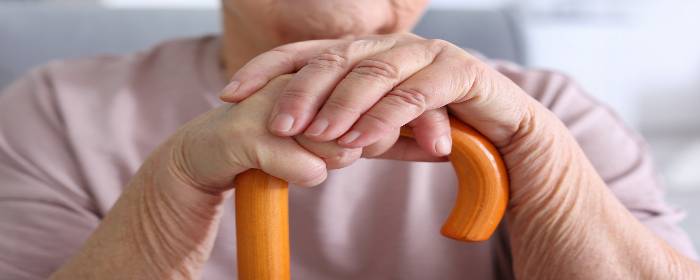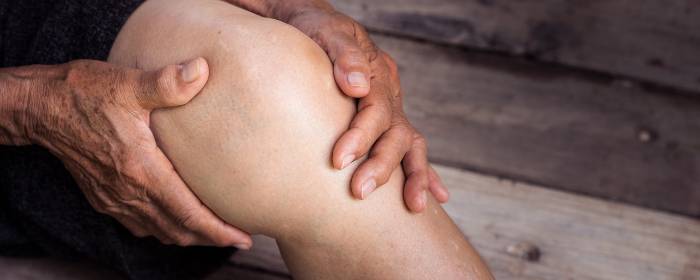
by admin | Jan 23, 2020 | Musculoskeletal, Osteoarthritis, Stem Cell Therapy
Virtually everyone will have musculoskeletal pain at some point in their lives. For most, it is a short-lived pain that goes away in a few minutes or a few days. In many, however, musculoskeletal pain is a chronic, daily struggle. They wake up in pain, struggle with pain throughout the day, and pain interferes with their ability to sleep at night. Here is how doctors are using stem cells to treat musculoskeletal pain.
There are surprisingly few good treatments for chronic
musculoskeletal pain. One could take ibuprofen (Advil), naproxen (Aleve), or
acetaminophen (Tylenol) to treat short term musculoskeletal pain. However,
people with chronic musculoskeletal pain need to take these drugs multiple
times a day, every day. Over time, this can damage the liver or the kidneys.
Opioids are powerful painkillers but are not good choices
for treating chronic musculoskeletal pain. People who take opioids for more
than a few weeks for non-cancer, musculoskeletal pain are at great risk of
becoming physically dependent on the drug. Stated another way, they may become
addicted to opioids.
Mesenchymal stem cells are an attractive tool to treat musculoskeletal pain because of two main factors. First, they have the ability to find their way to the site of injury and inflammation. In other words, they collect at the site of musculoskeletal pain. Second, stem cells release a large number of substances into the surrounding area that block or reduce inflammation.
Researchers have been making good progress in initial studies of mesenchymal stem cells for various kinds of musculoskeletal pain. For example, people with musculoskeletal pain caused by osteoarthritis of the knee who received stem cells had profound reductions in pain, even great relief the knee debridement surgery (i.e. orthopedic surgery to remove damaged joint tissue and make the joint surfaces smoother. In separate work, Mesenchymal stem cells reduced knee pain improved physical therapy performance and increased the volume of the knee joint affected by osteoarthritis. Similar results have been obtained in people with musculoskeletal pain and osteoarthritis in the hip and foot.
It is important to note that the procedure is safe. In a review of 844 autologous Mesenchymal stem cells infusion procedures for the treatment of osteoarthritis, there were no major adverse events reported.
Musculoskeletal pain is very common. When people develop chronic musculoskeletal pain, it can be debilitating and dramatically diminish the health-related quality of life. While more work is needed, the results detailed here provide hope to the millions of people who struggle with daily musculoskeletal pain.
Reference: Labusca, L. et al. (2015). Stem cells for the treatment of musculoskeletal pain. World Journal of Stem Cells. 2015, Jan 26; 7(1): 96-105.

by admin | Oct 25, 2019 | Adipose, Osteoarthritis, Stem Cell Research, Stem Cell Therapy
Osteoporosis is a disease in which bones become weak, brittle, and are prone to fracture. While osteoporosis is commonly considered a disease of low bone density, it is actually more complex and extensive than that. New bone is constantly formed and destroyed (resorbed) throughout life. In osteoporosis, however, the rate at which it is resorbed accelerates, while the rate at which it is formed slows down. In other words, bone is being destroyed faster than it can be formed. This process changes the size and shape of bones and alters its microarchitecture (i.e. the structure of bone on a microscopic level).
Without screening, most people will not know that they have osteoporosis until they have a bone fracture. Bones simply get weaker until some minor trauma causes one or more bones to break. Fortunately, efforts to screen for the disease (e.g. DXA/DEXA or bone density scans) have helped doctors diagnose cases of osteoporosis before the disease progresses to the point of bone fracture.
The main treatment for osteoporosis is a class of drugs called bisphosphonates. Bisphosphonates block the cells that resorb bone (osteoclasts) to allow the cells that form new bone (osteoblasts) to catch up. While bisphosphonates are effective, many patients experience severe GI side effects from these drugs including reflux, esophagitis, and ulcers, and cannot take them.
In an effort to find new ways to treat osteoporosis and help patients who cannot tolerate bisphosphonates, researchers are exploring the possibility of using stem cells to treat the disease. Ideally, one would take stem cells from patients, purify them, get the cells to multiply in the lab, and inject them back into patients with osteoporosis to help regrow bone. What has been unclear was whether a person with osteoporosis still has enough healthy stem cells to effectively regrow bone.
To test this, Dr. Jiang and colleagues collected stem cells from fat tissue of patients with osteoporosis (i.e. adipose-derived stem cells). The researchers took these stem cells and encouraged them to grow and multiply for 14 days. After the stem cells had proliferated, they injected the cells into mice and studied the effects on bone growth. After 4 weeks, the researchers saw evidence on X-ray scans that adipose-derived stem cells caused new bone growth.
These results demonstrate that even patients with osteoporosis still possess stem cells that can be used to treat their own osteoporosis. While the stem cells need to be treated in a laboratory setting for 14 days, it is potentially possible to use a patient’s own stem cells to regrow bone and treat their osteoporosis.
The next phase of research will be to conduct a clinical trial to show test whether autologous stem cell treatment (injecting a patient with their own stem cells) can regrow bone in humans. While those clinical studies will be critical in determining whether this approach is practical and effective for patients, this laboratory research is very promising.
Reference: Jiang, M. et al. (2014). Bone formation in adipose-derived stem cells isolated from elderly patients with osteoporosis: a preliminary study. Cell Biology International. 2014 Jan;38(1):97-105.

by admin | Oct 11, 2019 | Mesenchymal Stem Cells, Exosomes, Osteoarthritis
The field of Regenerative Medicine has shown great promise for helping those with a variety of chronic diseases, including arthritis. Indeed, data on the potential value of using stem cells to address issues relating to arthritis have been growing. While specific stem cells like mesenchymal stem cells have demonstrated therapeutic effects in models of arthritis and other inflammatory diseases, the specific ways in which these cells confer their benefits are not yet well understood. Given that these stem cells contain different types of elements, it is important that research establishes which of these elements is critical to the therapeutic properties of stem cells.
A recent study, published in Theranostics, looked specifically at the different effects that small exosomes and larger microparticles from within mesenchymal stem cells have on the inflammatory processes that occur in arthritis. To conduct their experiment, scientists isolated the exosomes and microparticles from mesenchymal stem cells using an ultracentrifugation technique and then exposed the exosomes and the microparticles to cells of the immune system – specifically, T and B lymphocytes, which are implicated in arthritis.
What the researchers found was that, in their models of arthritis, both the exosomes and the microparticles suppressed the T lymphocyte proliferation that is indicative of inflammation. However, unlike microparticles and even parental mesenchymal stem cells, the exosomes were also able to induce other anti-inflammatory effects. The result of exosome activity was, therefore, more efficient blunting of inflammation.
These results point to the potential of not just stem cells, but specifically the exosomes of these cells, in therapeutically addressing inflammatory arthritis. While more research is needed to understand how these exosomes could actually impact arthritis patients, these data provide hope that stem cells and even just elements of stem cells will help these patients by improving their ability to combat problematic inflammation.
Reference: Cosenza, S. et al. (2018). Mesenchymal stem cells-derived exosomes are more immunosuppressive than microparticles in inflammatory arthritis. Theranostics, 8(5), 1399-1410.

by admin | Sep 21, 2019 | Health Awareness, Osteoarthritis, Pain Management
Joint pain and inflammation are common characteristics of arthritis. While many individuals use prescription medications to manage their discomfort, other lifestyle modifications such as dietary changes, regular exercise, and herbal supplements may help as well. In particular, certain herbs appear to minimize joint pain more so than others. Although clinical studies on the effectiveness of using the following herbal remedies for joint pain have been limited, the research that has been performed is promising. The following 5 plants that help control joint pain.
Turmeric
The yellow spice commonly used in Indian food has an orange pulp within its stem, which is where the plant compound curcumin is housed. This powerful agent has demonstrated an ability to reduce chronic inflammation caused by rheumatoid arthritis. Yet, because the body can only absorb so much curcumin, its benefits may be limited.
Eucalyptus
Oils can be distilled from the eucalyptus plant and used for anti-inflammatory properties. They are also believed to hold antiviral and antibacterial benefits. The tannins and flavonoids within the leaves are antioxidants, which could help to minimize the joint inflammation and pain experienced in arthritis. Eucalyptus oil can be diffused or added to a warm bath, though many individuals have an allergy to the plant.
Frankincense
Hailing from the bark of the Boswellia tree, frankincense has an aromatic quality, making it a popular ingredient in perfumes and incense. It can be inhaled, applied directly to the skin, or taken as a supplement. The herb is also believed to prevent leukotrienes, the compounds responsible for inflammation. It has even been shown to be as effective as NSAIDs for addressing joint pain in conditions like osteoarthritis and rheumatoid arthritis, but with fewer side effects.
Aloe Vera
Aloe is often the plant that many people reach for to treat burns, as it has both anti-inflammatory and antimicrobial properties. Yet, its anti-inflammatory benefits can be realized by people with arthritis, too. The plant inhibits the production of inflammatory enzymes, which may help to control joint pain.
Borage Oil
The starflower plant contains seeds which are rich in an omega-6 fatty acid known as gamma-linolenic acid (GLA). When metabolized, GLA converts into a signaling molecule which helps regulate inflammatory responses within the body. Certain oils with GLA have been shown to alleviate pain in individuals with rheumatoid arthritis, but borage seed oil is believed to be the most effective because it protects cells from oxidative stress which could be caused by high concentrations of GLA.
While herbal remedies, unfortunately, cannot cure arthritis, they may make a noticeable difference in pain levels, swelling, and stiffness. For individuals who are seeking an alternative to NSAIDs or other drugs, trying plant-based alternatives may be a worthwhile therapeutic option to consider.

by admin | Jul 8, 2019 | Exosomes, Osteoarthritis, Stem Cell Research, Stem Cell Therapy
Osteoarthritis is the most common form of arthritis. About one in 10 people will develop osteoarthritis at some point in their lifetimes. As the condition progresses, synovial membranes and cartilage break down. Osteoarthritis causes people to experience joint pain, joint stiffness, and restricted movement. Knees, hips, and hands are common sites for arthritis, though people can experience the condition in virtually every joint in the body including joints and spine. Mild osteoarthritis may be nothing more than an annoyance, but moderate and severe osteoarthritis can diminish a person’s quality of life and cause substantial suffering and disability.
Despite the commonness of osteoarthritis, there are very few effective treatment options. People may take pain medications to help cope with discomfort; however, taking these medications every day can lead to unwanted side effects. Physical therapy, braces, walking aids, and exercise may have some effect, but their benefit is unpredictable, i.e., these approaches work for some people and not others. The only definitive treatment for osteoarthritis is to replace the joint with an artificial one; however, orthopedic surgery is expensive, associated with a long recovery, and is usually only an option after patients have suffered pain and disability for a long period of time.
Ideally, osteoarthritis treatment would be focused on restoring the structure of the damaged joint itself. For a time, physicians were hopeful that glucosamine and chondroitin could do this. These two substances are diminished in osteoarthritis, so the concept was to replace them and hopefully rebuild damaged joints. While initial clinical studies seemed to suggest glucosamine and chondroitin were helpful, larger, high-quality clinical trials failed to show any benefit. Nevertheless, the goal of repairing joints damaged by osteoarthritis is still a top goal. Now, however, scientists have turned to stem cells instead of small molecules.
Stem cell researchers are particularly interested in the small sacs released by stem cells called exosomes. Exosomes contain proteins, RNA, cytokines, and other substances that are important for tissue regeneration. Exosomes are apparently responsible for most of the clinical benefit of stem cells in the first place. Moreover, it is much more convenient for doctors to use exosomes as treatment rather than stem cells themselves.
To this end, researchers have been studying the effects of stem cell exosomes. One research group recently published a report studying the effects of exosomes that were collected from synovial membrane stem cells and compared them to exosomes taken from induced pluripotent stem cells. Synovial membrane stem cells are an obvious choice for treating osteoarthritis since synovial membranes are one of the substances that break down in the disease. However, synovial membrane stem cells are difficult to obtain. It is far more practical to use induced pluripotent stem cells since there is a virtually limitless supply of them.
The researchers compared exosomes taken from these two types of stem cells in mice with experimental osteoarthritis. Not only did the scientists show that exosomes taken from pluripotent stem cells were highly effective in treating osteoarthritis, these exosomes were even more effective in treating osteoarthritis then exosomes taken from synovial membrane stem cells. Exosomes from pluripotent stem cells not only repaired synovial membranes but they also helped replace cartilage by stimulating chondrocytes (cartilage cells).
Of course, this work will need to be confirmed in humans with osteoarthritis; however, the results of this animal research are very encouraging. In short, this research suggests that exosomes taken from induced pluripotent mesenchymal stem cells may be a convenient and effective way to treat osteoarthritis in the future.
Reference: Zhu, Y. et al. (2017). Comparison of exosomes secreted by induced pluripotent stem cell-derived mesenchymal stem cells and synovial membrane-derived mesenchymal stem cells for the treatment of osteoarthritis. Stem Cell Research and Therapy. 2017 8:64.

by admin | Mar 4, 2019 | Mesenchymal Stem Cells, Osteoarthritis
Osteoarthritis is the most common form of arthritis. In fact, when people casually use the term “arthritis” or think of the arthritis of old-age, they are usually talking about osteoarthritis. People with arthritis experience many symptoms in and around the affected joints including pain and swelling. The affected joints may become unstable or “give out.” At the same time, people who suffer from osteoarthritis may not be able to move their joints fully or smoothly. Commonly people feel that their joints are “stiff.”
Early in osteoarthritis, the pain may just occur occasionally. Perhaps, the person feels sharp pain when moving a certain way. In later stages of osteoarthritis, the affected joints constantly ache, and moving the joint becomes intensely painful.
Nonsteroidal anti-inflammatory drugs or NSAIDs can help in some cases, but they become less effective as osteoarthritis becomes more severe. Often people with osteoarthritis must receive injections of anesthetics and steroids into the joints itself. Ultimately, patients often need orthopedic surgery to grind away diseased joint tissue or even replace the joint with the artificial one.
Researchers are searching for ways to reverse osteoarthritis instead of just treating the symptoms. Fortunately, stem cells may offer hope. Doctors have long known that in people with osteoarthritis, the cartilage becomes thin and breaks down. Joint cartilage lubricates the joint, acts as a shock absorber, and helps the joint move smoothly. When cartilage breaks down, the joint becomes stiff, painful, and irritated. As recent research suggests, mesenchymal stem cells may rebuild and restore joint cartilage.
Two scientists, Kristjánsson and Honsawek, recently reviewed the state of the research in this field. They identified eight clinical studies that tested mesenchymal stem cells on patients with varying degrees of osteoarthritis. The clinical trials demonstrated several intriguing findings. Most notably, mesenchymal stem cells were able to promote cartilage regeneration, reduce pain, and improve joint function. The scientists also found that the more stem cells that were injected, the better the outcome. In addition, the beneficial effect of stem cells occurred whether the cells were taken from the patient (autologous stem cells) or from young, healthy donors (allogenic stem cells).
Importantly, patients with mild to moderate osteoarthritis enjoy the greatest apparent benefit from stem cell injections. This suggests that doctors and patients should consider stem cell treatment earlier in the course of osteoarthritis before joints become too damaged and likely require surgery.
Mesenchymal stem cell injection for osteoarthritis has now been tested in at least eight clinical studies including randomized clinical trials, which are the gold standard studies for evaluating treatments in medicine. Research is ongoing and still needed but these results are strongly encouraging. They may offer, for the first time, a way for patients to reverse the changes of osteoarthritis rather than simply treating the symptoms of the disease.
Reference: Kristjánsson et al. (2017). Mesenchymal stem cells for cartilage regeneration in osteoarthritis. World Journal of Orthopedics. 2017 Sep 18; 8(9): 674–680.







 St. Petersburg, Florida
St. Petersburg, Florida
